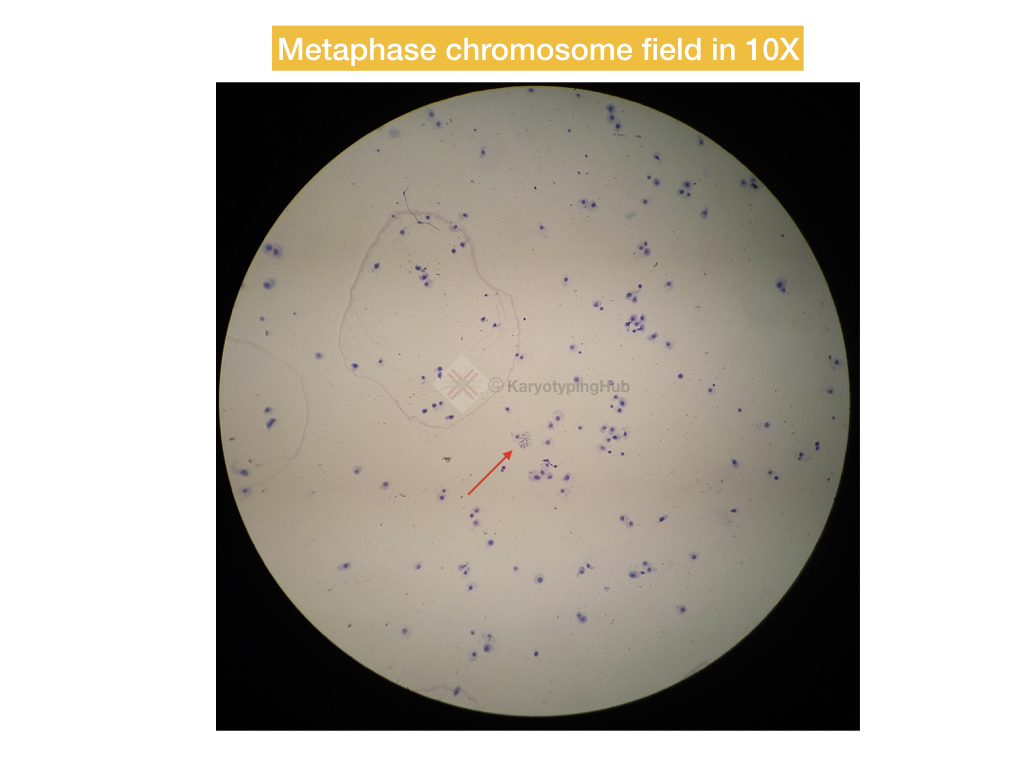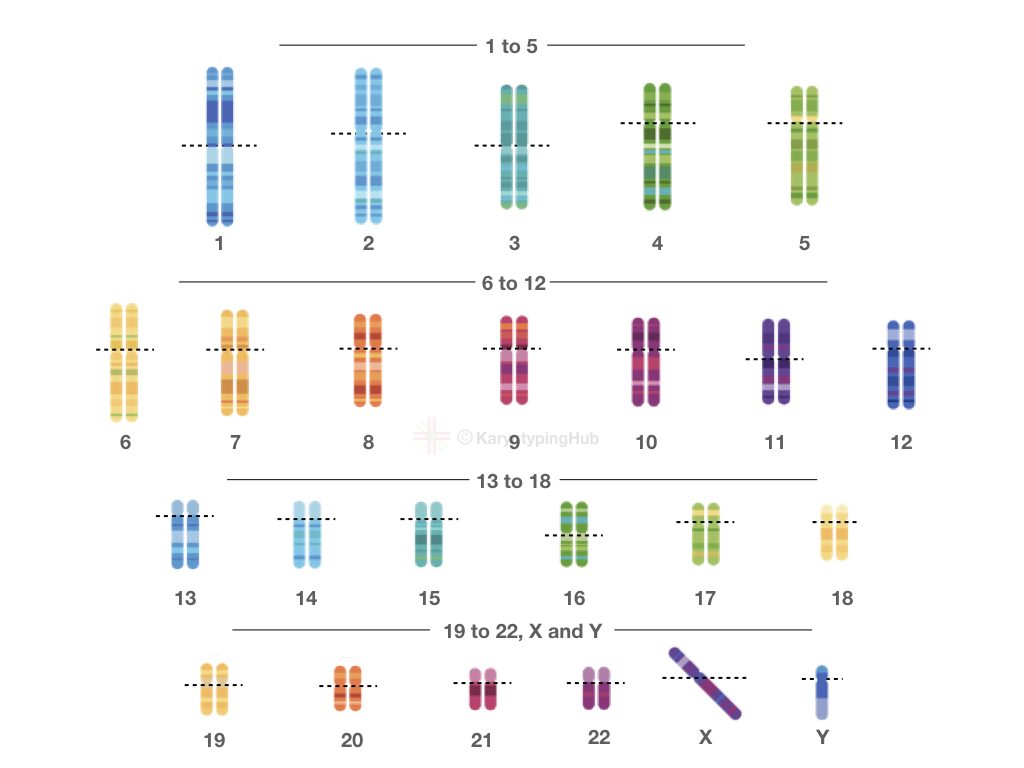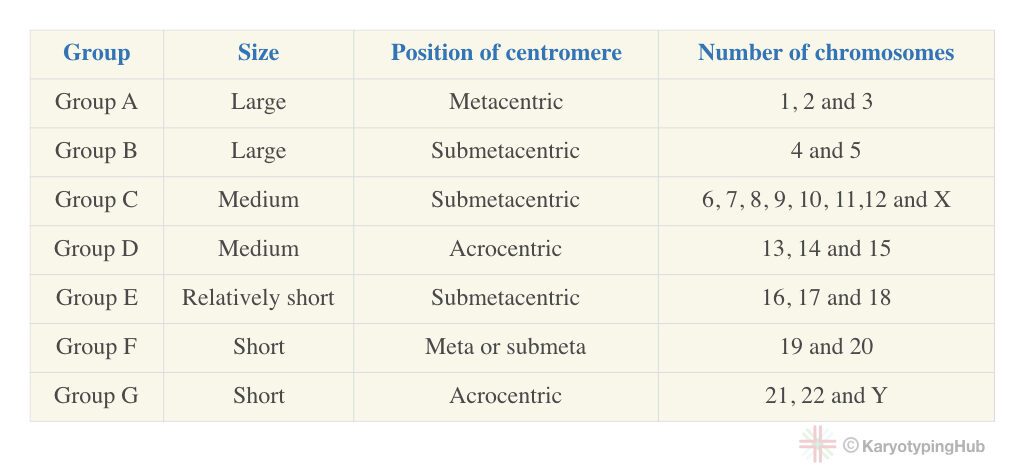“Arranging chromosomes using computer software or on a paper in order to study it is known as a karyotype. The process of karyotyping and preparing a karyotype is interconnected. “
Though karyotype preparation is totally a different thing. You need to do less lab work but require expertise to do it. But don’t worry about that, in the present article I will show you how you can prepare a karyotype in 5 easy steps!
Remember karyotyping and karyotype bot are different things, technically. But for some novice or outsider, it is known as “the process of preparing and arranging chromosomes to detect abnormalities.”
If you want to learn more technical things on karyotyping, you can read this article: A karyotype test- What is it and how to perform it.
Step 1: cell culture and harvesting
Step 2: microscopy
Step 3: taking a photograph
Step 4: Print it and cut it
Step 5: arrange and stick it
Requirements:
A good microscope, Computer, camera or camera system for microscope, plan A4 size papers, pen, glue, scissor and ruler.
Now let’s understand the entire process in five easy steps:
Step 1: Cell culture and harvesting:
In order to get metaphase chromosomes, first, we need to culture and harvest cells. A sample is cultured using the media in strict aseptic condition for at least 72 hours.
The purpose of it is to grow cells to get metaphase plates. The cell division is stopped by adding colchicine to the culture. This is the brief overview, the entire process in detail explained in our previous article. Go and read it first: What is karyotyping?
Step 2: microscopy:
Now after cells are harvested and slides are prepared we have to identify the metaphase cells and target them. It somehow look like the image shown below,

Once you get metaphases, focus it on 45X and then 100X. Try to get good chromosome fields. For encountering a disease usually, 50 to 100 different metaphase fields are observed by an expert.
Microscopy for karyotyping is a tedious job, you have to scan many fields and slides one by one to find some good results. However, once you achieve some expertise, you can do it easily.
When you find some good field note down it’s scales so that you can locate it next time.
The automated microscopy systems are nowadays so popular and powerful enough to detect metaphase fields. Once we put the slide on a microscope the software automatically scans and stores good metaphase spreads.
Also, by using the automated microscopy system 50 to 100 slides can be screened at once. That is also a good benefit of it.
Nonetheless, the automated microscopy system with the software is so costly, a small laboratory can’t afford it. So we have to do it manually. If we don’t have a good camera system, move to the next manual step.
Step 3: taking a photograph:
To arrange each chromosome in a karyotype (to prepare a karyogram), we need to analyze every chromosome band carefully. As we know every chromosome is different, in terms of length, location of centromere and number of bands, we can separate it.
For instance, chromosome 1 is the largest metacentric and has 3 to 4 different prominent bands on each arm. contrary to chromosome 21 is the smallest acrocentric one with one arm.
To prepare a karyotype correctly we need to have a good quality and sharp image or picture. We need to have a good camera system setup to do so.
Now, there are so many image capturing devices available.
The device is like a camera, directly fits on the eyepiece of a microscope and is attached to a computer. We can directly analyse metaphases on a computer without even seeing in a microscope.
You can also take photographs directly using a camera or mobile but that will not be a good one. You can use it for practice.
Step 4: Print it and cut it!
Once you get a good field save it to your computer or take a snape with mobile and transfer to a computer.
Press ctrl+P and just print it on A4 sized paper.
Meanwhile, on a plain paper, categories for different chromosomes make space for 1 to 5 chromosomes in the first row. Next make space for 6 to 12 numbers of chromosomes in the second line, 13 to 18 in third and 19 to 22, X and Y in the last row. Like this- see the image,

Carefully cut all the chromosomes with a scissor. Cut it very nicely and collect number wise.

Step 5: Arrange it and stick it:
In the final step, try to identify every chromosome and stick it number wise on the plane sheet what we have prepared in step 4.
Make a pair of each chromosome and stick it with glue. At last check with the available results or with your teacher.
Related article: Protocol for karyotyping.
Tips and tricks to make karyotype easy:
When you see an arranged karyotype, you may think it is easy but it isn’t! It’s my personal experience, even experts sometimes make mistakes because all chromosomes in a field look the same. Or even though you know every chromosome, you can’t arrange it.
The reason for that is, you don’t know where to start. No need to worry again, I will teach you.
There are two ways you can start preparing a karyotype. First, on a print (of a karyotype field) number all chromosomes with pencil. Second, try to make sets. Once you cut it, it will be even very difficult to identify.
Try to make sets. First identify and cut all the metacentric chromosomes (which are larger) like 1, 2 and 3. Chromosome 21, 22 and Y are acrocentric, Chromosome 4 and 5 are larger Submetacentric. Check out the table below for more detail.

So you can make groups of chromosomes and then stick it on paper. It is easier than doing it randomly.
Remember, when you are preparing a karyotype, first, identify the larger metacentrics and acrocentrics. Identify all others afterward that will be easy for you.
Conclusion:
I hope this article helps you to learn more about how to prepare a karyotype. Not a single article on the internet has covered this topic. Karyotyping is not hard to learn though not impossible.
This informative guide will definitely help you with your assignments. In the upcoming article, we will give you training on preparing karyotype and some sheets you can use for practice purposes.
Also, we are planning to make a video tutorial on karyotyping. If possible we will also make a video on the entire process of karyotyping, starting from culturing to cell harvesting. Till then stay tuned with our blog. And let me know about your queries.

